Do you know what wall panelling is? It's a transformative design element reshaping interiors in 2024. From rustic shiplap to sleek 3D panels, we'll explore 15 popular types that promise to elevate any space. Dive in to find your inspiration and the perfect panelling style for your home.
What is a Wall Panelling
Wall panelling is a distinguished design element in interior decoration that involves the installation of individual pieces of material such as wood, plastic, or metal over wall surfaces. These panels are usually shaped into rectangles and serve both aesthetic and functional purposes. They enhance the visual appeal of a room with their varied textures, patterns, and finishes while also offering practical benefits like improved wall insulation, increased durability, and ease of maintenance.
Available in a wide range of styles, from classic wood panelling to contemporary 3D designs, wall panelling offers versatile solutions for elevating the ambiance and comfort of living spaces, offices, and commercial settings.

Wood-Based Paneling
Shaker Style / Board and Batten
Shaker Style, also known as Board and Batten, enhances interior spaces with its elegant simplicity. This design features evenly spaced vertical strips, creating rectangular patterns that are framed with horizontal strips at the top and bottom.
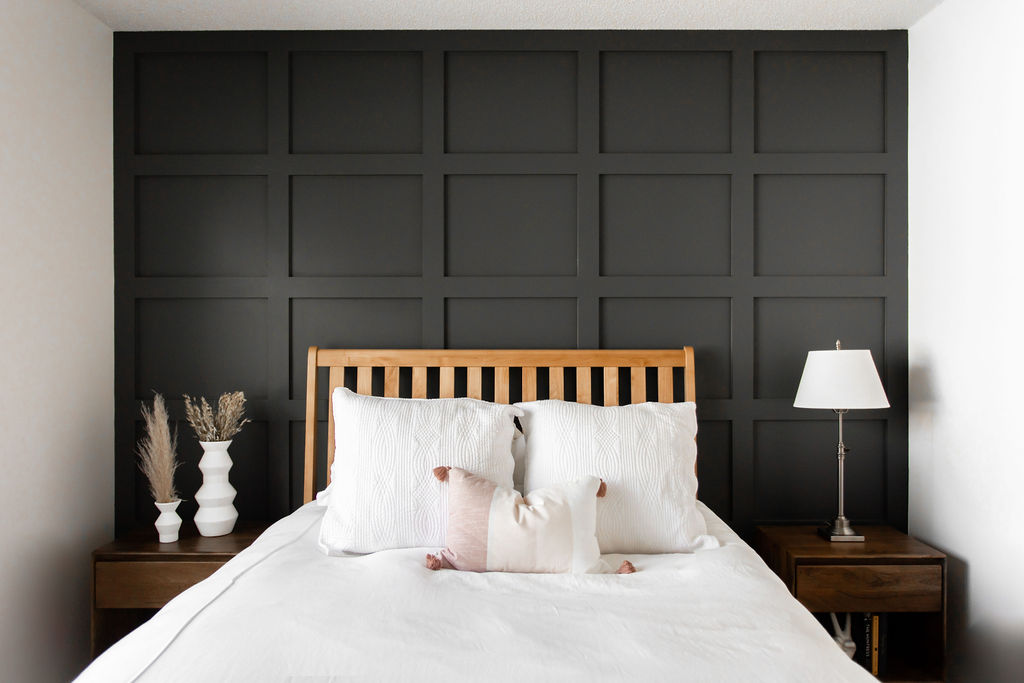

- Installation Method: Begin by preparing a smooth wall surface. Attach vertical strips evenly across the wall, followed by horizontal strips at the top and bottom to frame the design. Finish with paint or stain to match the decor.
- Common Applications: Ideal for various settings, including homes, commercial spaces, and hospitality areas. It is especially favored in living rooms, dining areas, hallways, and bedrooms for its sophistication and customization potential.
>> See How to Install Wall Panelling
Wainscoting
Wainscoting adds elegance and protective charm to interiors by covering the lower half of walls with panels, chair railing, and molding. Originating in the 18th century, it was a mark of wealth and practicality, supporting walls in homes across Europe and New England.
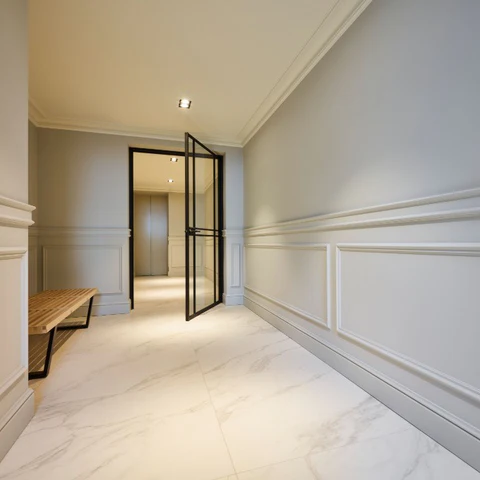

- Installation Method: Installation involves measuring and cutting wood panels to fit the lower wall, followed by the addition of chair railing and molding for a finished look. It's typically painted or stained to complement the room's design.
- Common Applications: Wainscoting is a versatile decorative feature suited for dining rooms, hallways, staircases, and more. It protects walls from wear and tear while making ceilings appear higher, contributing to both the aesthetic and durability of a space.
Shiplap
Shiplap brings a rustic charm to interiors through its unique installation of overlapping wooden boards, creating a snug seal. Characterized by its distinctive, textured appearance, shiplap adds warmth and visual interest with its wooden or composite planks.
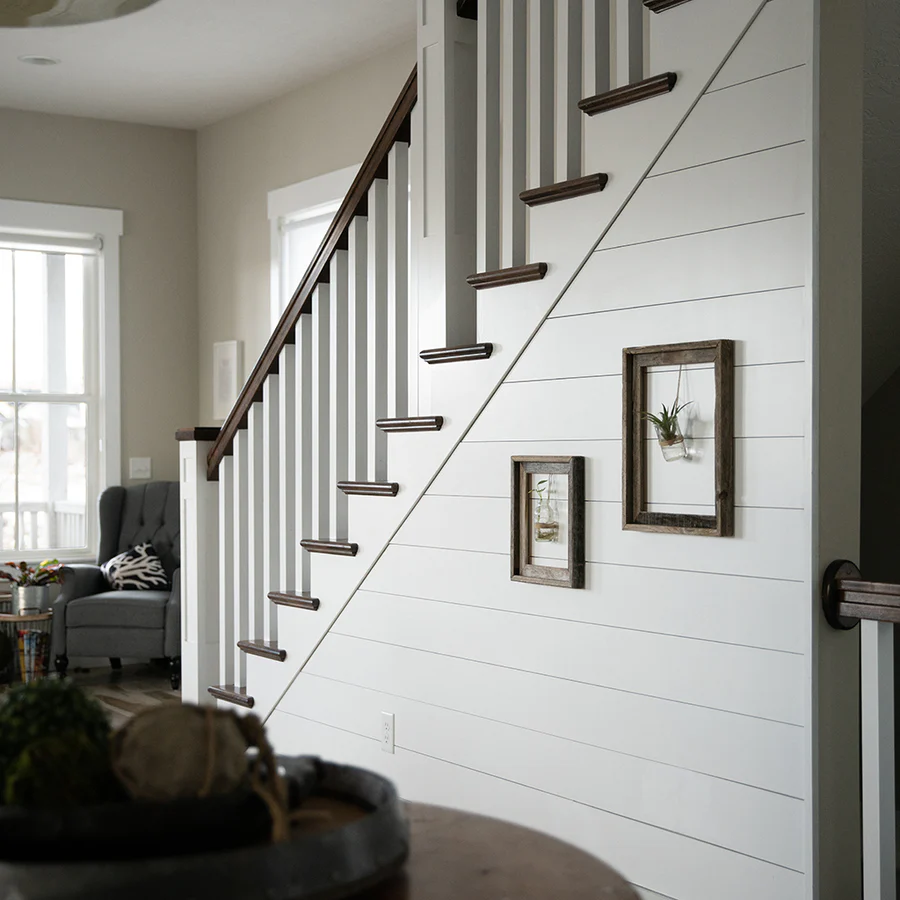
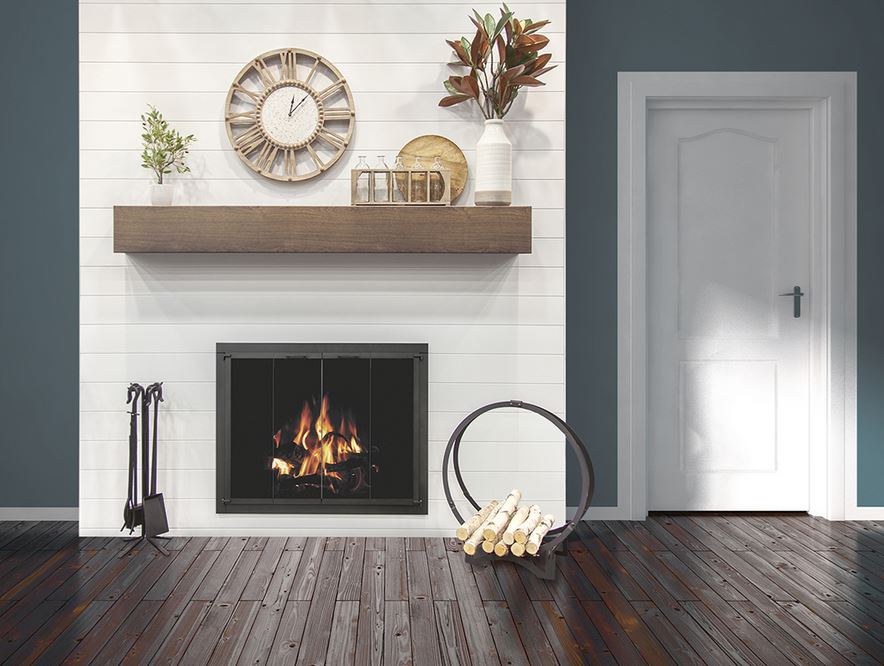
- Installation Method: Each board is designed to overlap the next, ensuring a tight fit. Start from the bottom, working upwards, to create a seamless pattern that locks in place, providing both aesthetic appeal and added insulation.
- Common Applications: Perfect for achieving a cozy, country aesthetic in living rooms, bedrooms, and bathrooms. Shiplap is also a popular choice for accent walls, ceiling coverings, and in spaces seeking a touch of rustic elegance.
Tongue and Groove
Tongue and Groove paneling is a refined, interlocking method that joins panels edge to edge, creating a smooth, unified surface. This technique features a 'tongue' on one edge of a panel that slots perfectly into a 'groove' on the edge of another, ensuring a seamless fit.
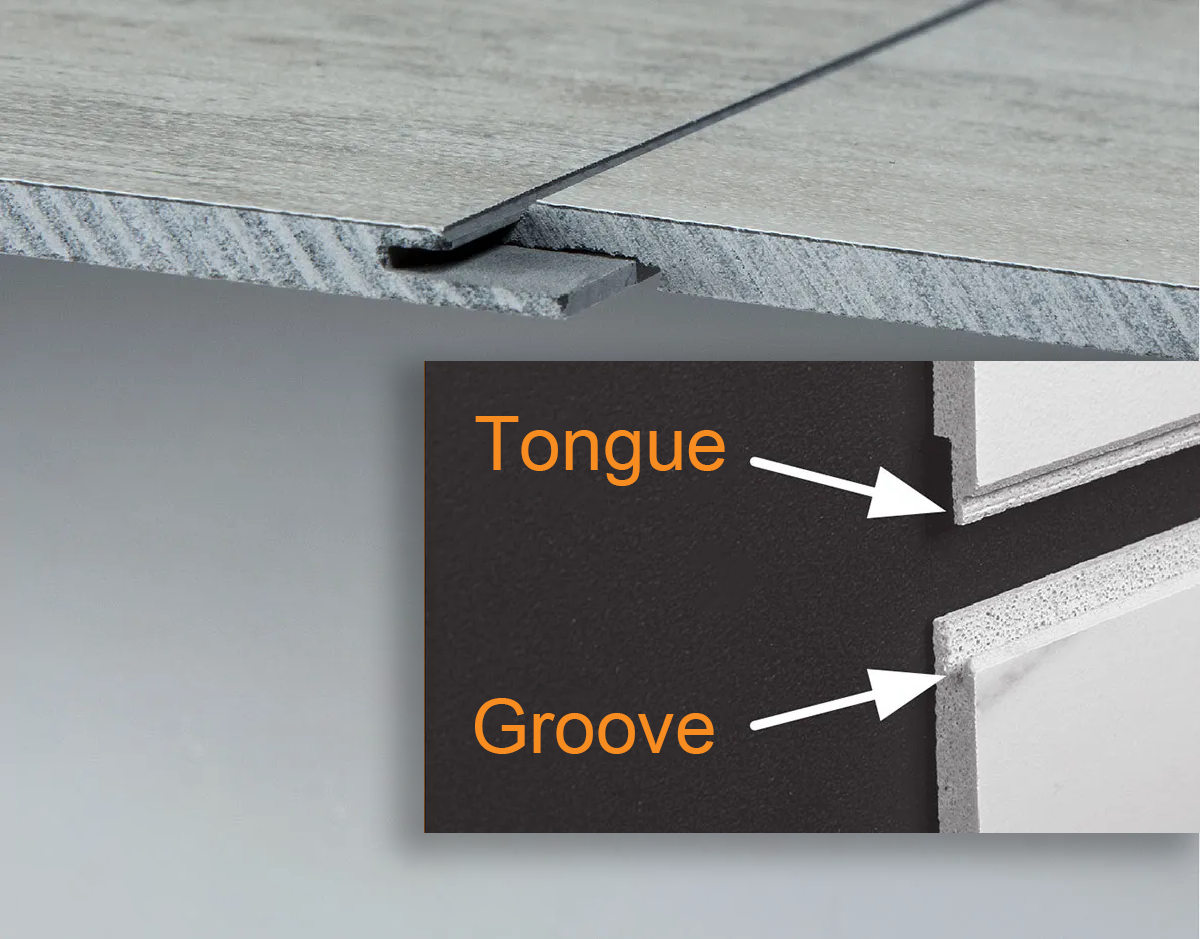

- Installation Method: Begin by aligning the tongue of one panel with the groove of the adjacent panel, pressing them together to form a tight, flat seam. This method not only ensures a secure fit but also hides the nails or screws used for installation, contributing to a sleek finish.
- Common Applications: Ideal for flooring, wall paneling, ceilings, and outdoor decks. Its versatility and elegance make it a popular choice for both traditional and contemporary designs, enhancing the visual and structural harmony of any space.
Wood Slat Paneling
Wood Slat Paneling is a versatile design element that introduces texture and depth through spaced wooden slats. Ideal for accentuating walls, kitchen islands, cabinets, and ceilings, this style not only elevates the aesthetic but also offers acoustic benefits by reducing noise and echo.
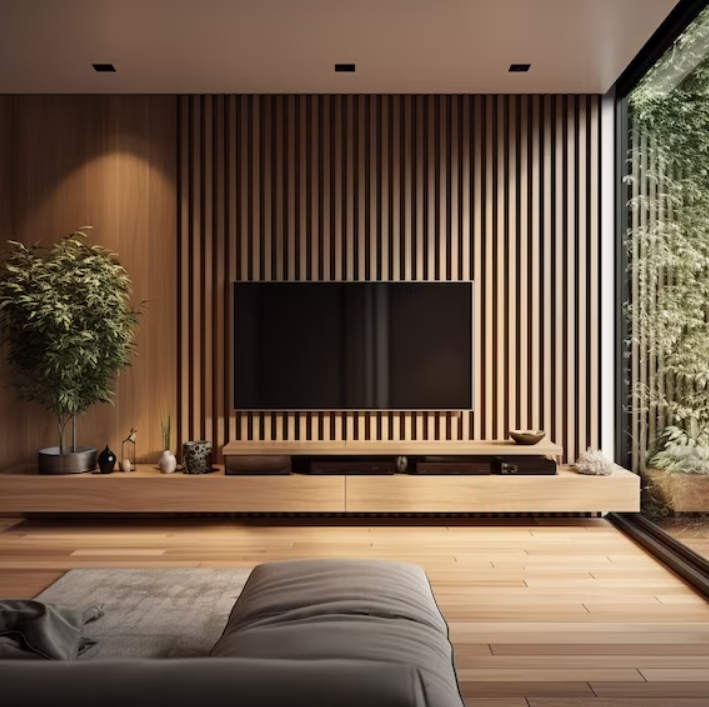

- Installation Method: The slats are typically mounted onto a backing board, which is then affixed to the desired surface. This ensures a uniform distance between each slat for a coherent look. Finishes can range from natural woods like oak and walnut to painted options in colors such as black, midnight blue, dusty gray, and snow white.
- Common Applications: Wood slat paneling is favored for its ability to create visually striking feature walls or enhance the character of ceilings and kitchen islands. Its noise-reducing properties make it a practical choice for living areas, home theaters, and spaces where sound quality is important.
Geometric / 3D Wood Paneling
Geometric or 3D Wood Paneling transforms walls into works of art with its dynamic surface patterns that add depth and movement. These panels, notable for their three-dimensional designs, serve both decorative and functional purposes by enhancing wall aesthetics and providing soundproofing and insulation benefits.
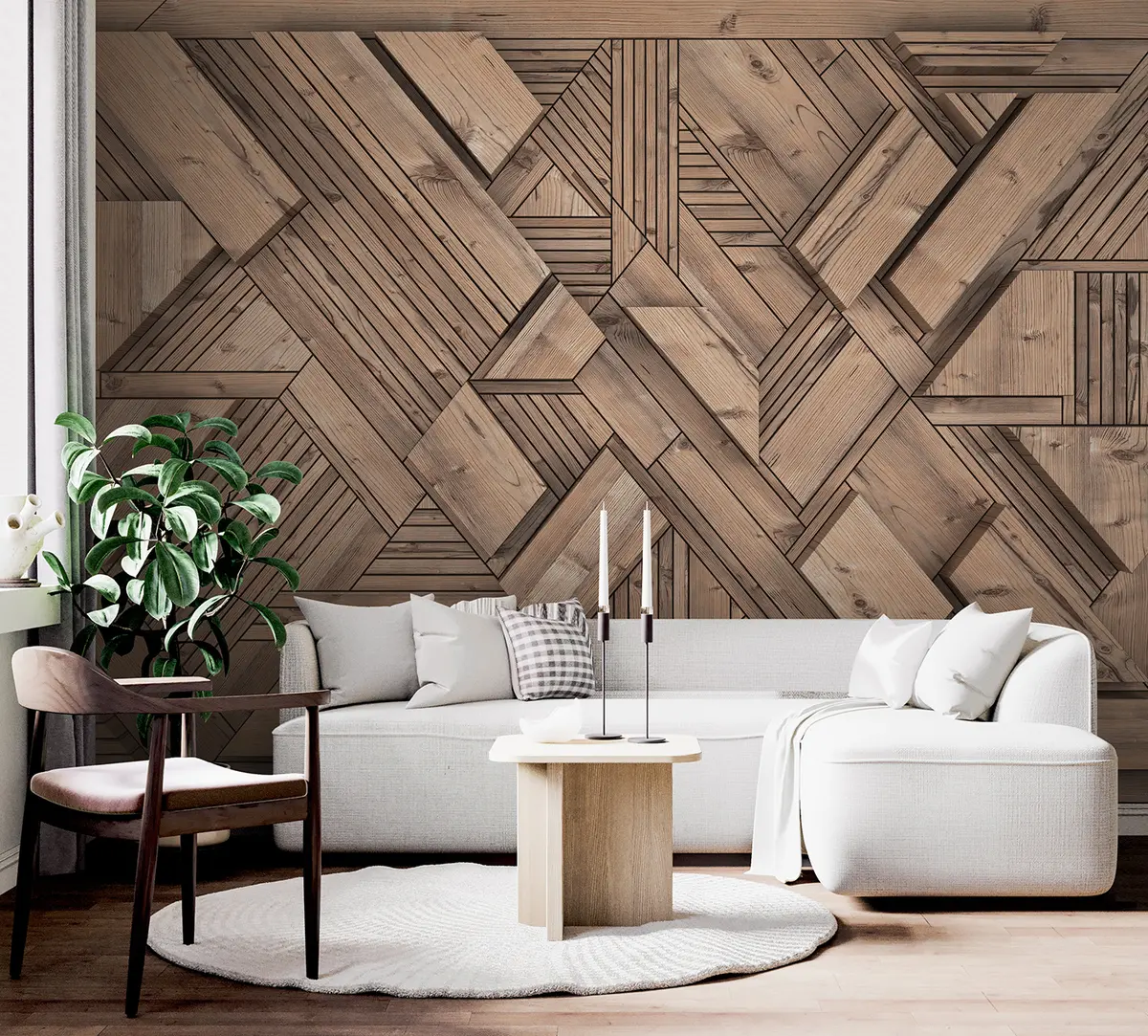

- Installation Method: These panels are directly applied to wall surfaces, creating a standout feature with their pronounced textures and shapes. The installation process varies with the design complexity but generally involves aligning the panels accurately to achieve a cohesive 3D effect.
- Common Applications: Ideal for accent walls in living rooms, bedrooms, and commercial spaces like hotels and offices, where they contribute to a modern and engaging atmosphere. Besides their visual appeal, their insulation properties make them a practical choice for creating comfortable, acoustically balanced environments.
Pallet Wood Paneling
Pallet Wood Paneling introduces a rustic and eco-friendly charm by repurposing reclaimed wood from shipping pallets. This paneling style adds warmth and texture, transforming spaces with its unique and sustainable beauty.
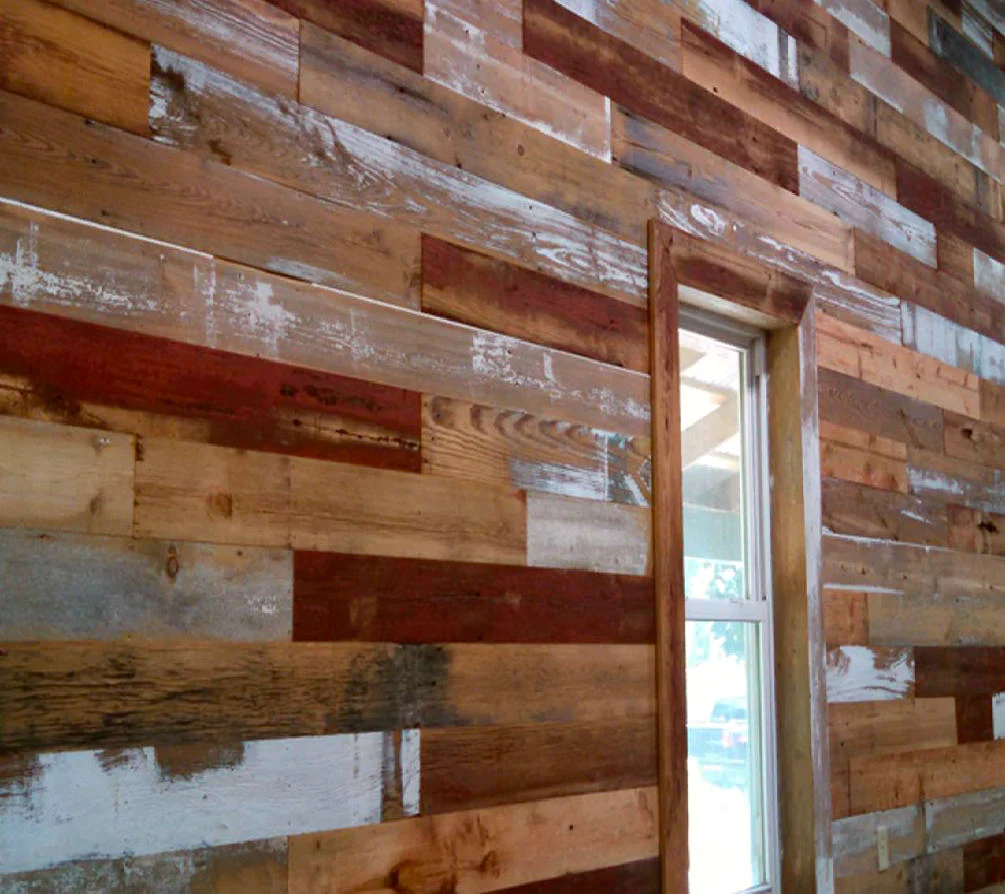
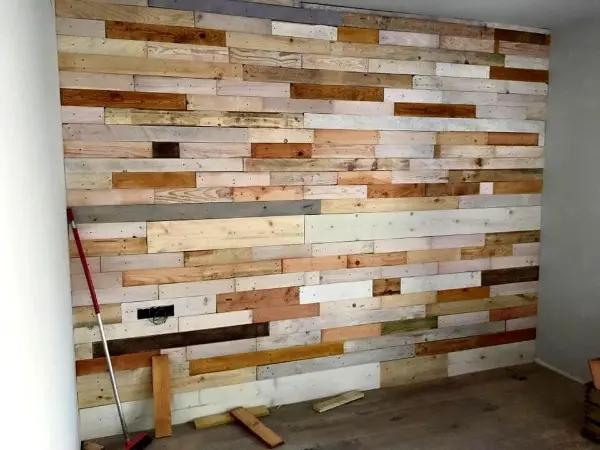
- Installation Method: The reclaimed pallet boards are cleaned, sanded, and possibly treated or stained before being cut to size. They are then attached to the wall, either in a uniform or staggered pattern, depending on the desired aesthetic. The natural variations in wood grain and color enhance the wall's visual interest.
- Common Applications: Ideal for creating feature walls, backsplashes, and decorative cladding in residential or commercial spaces. Pallet wood paneling is especially popular in spaces seeking a warm, inviting atmosphere with a story of sustainability and creativity.
Beadboard
Beadboard paneling, characterized by its distinctive vertical grooves, adds a classic and cozy touch to interiors. Modern innovations have simplified its installation, with large sheets that can be easily tailored to fit various spaces.
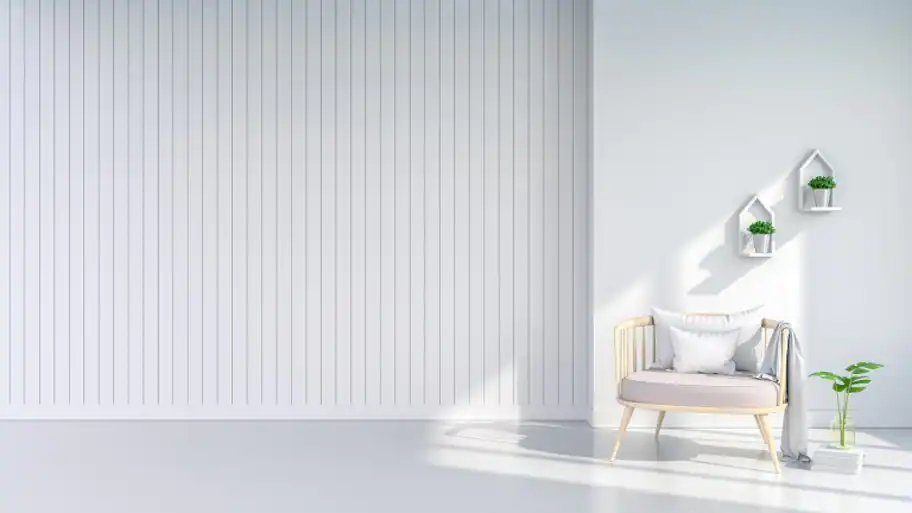
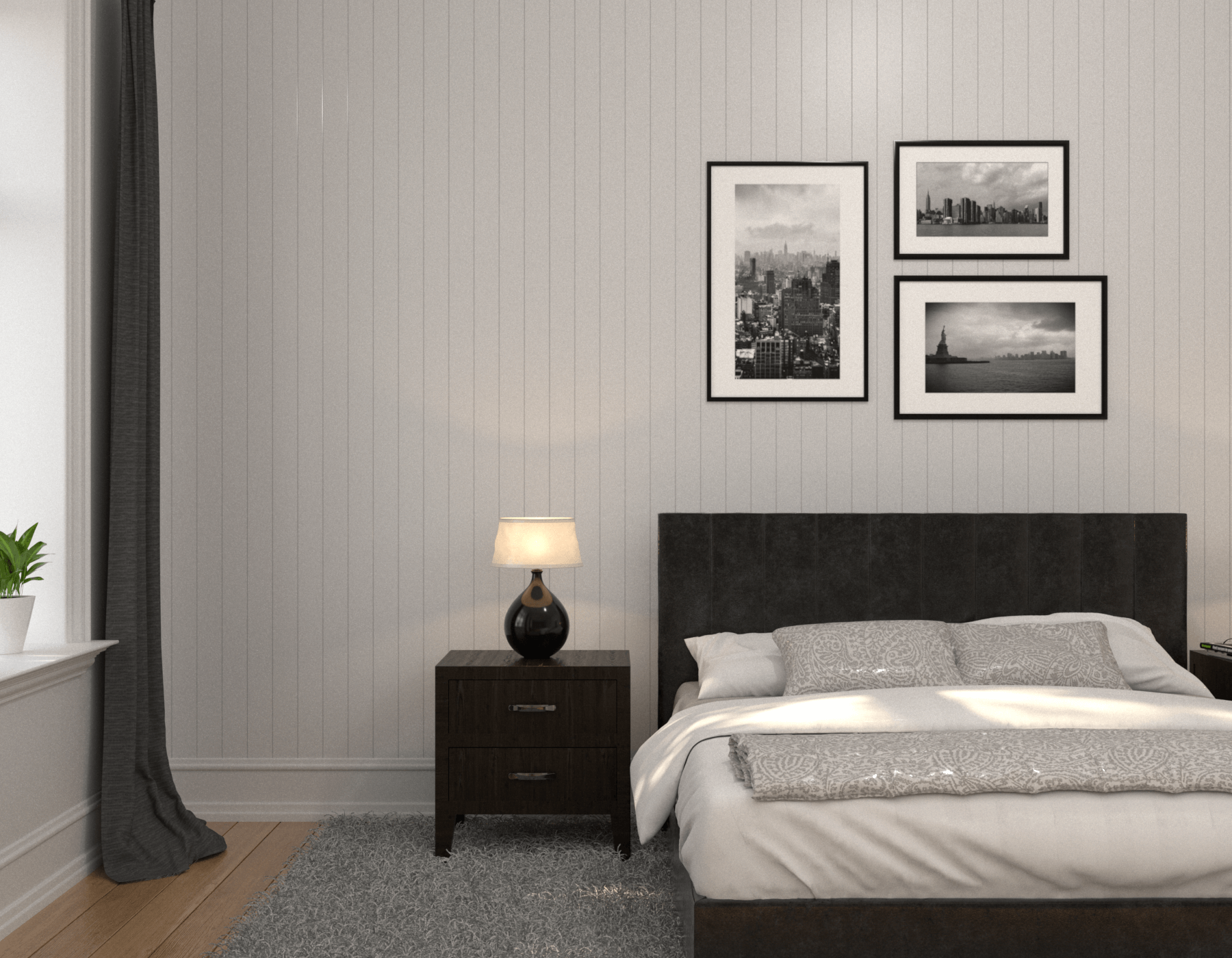
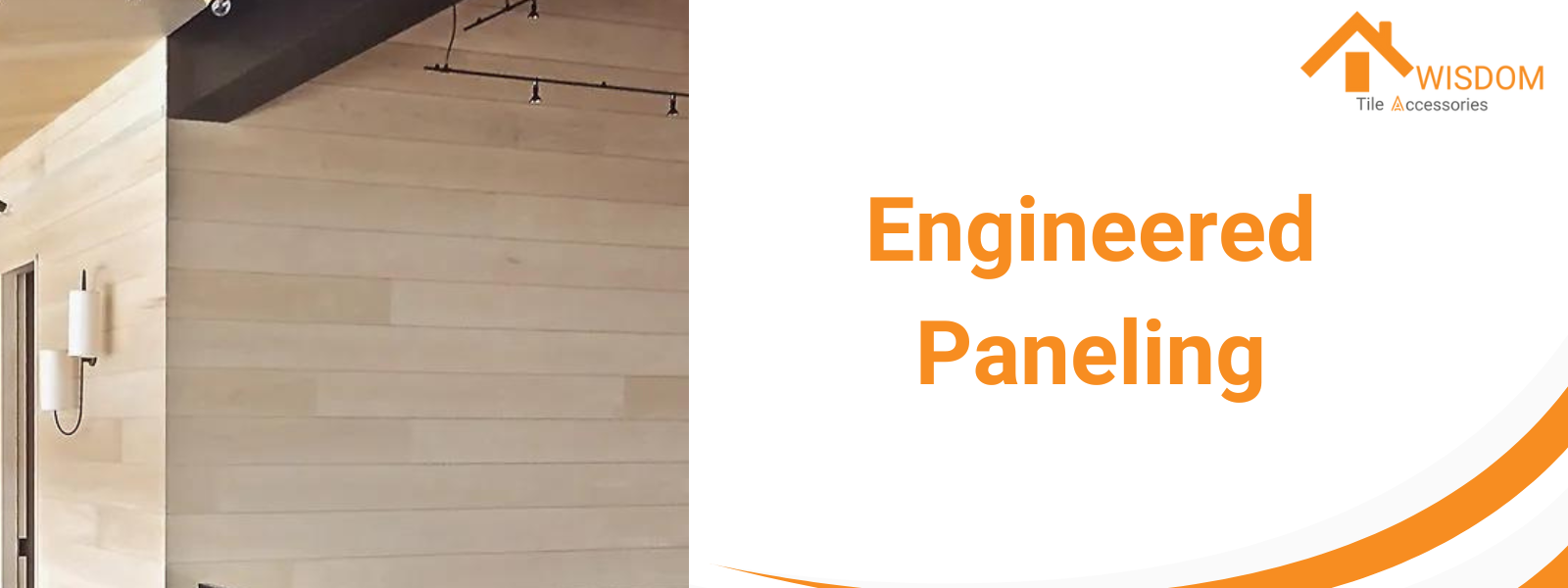
Engineered Paneling
MDF Paneling
MDF Paneling, crafted from Medium Density Fibreboard, offers a smooth and versatile alternative to natural wood. This engineered wood product is made from wood residuals, combining practicality and affordability for a wide range of home improvement projects.
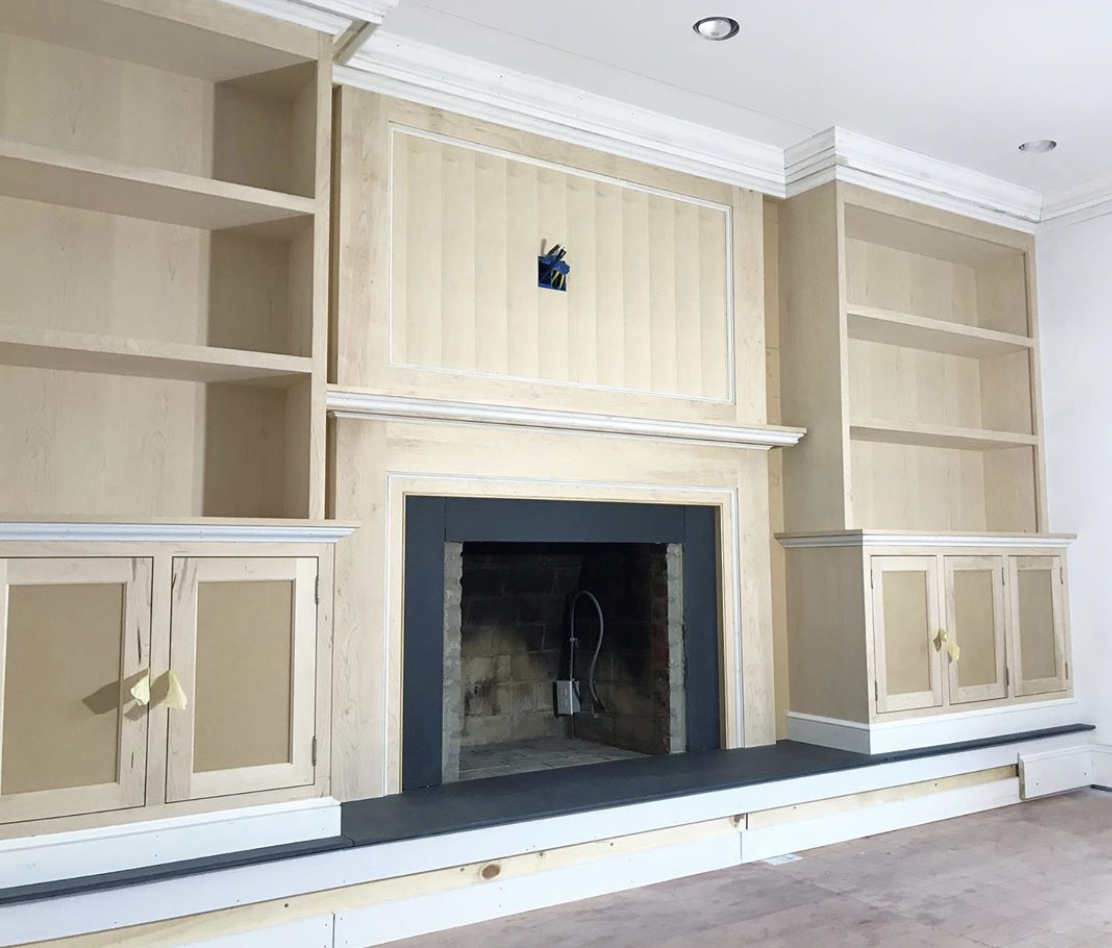
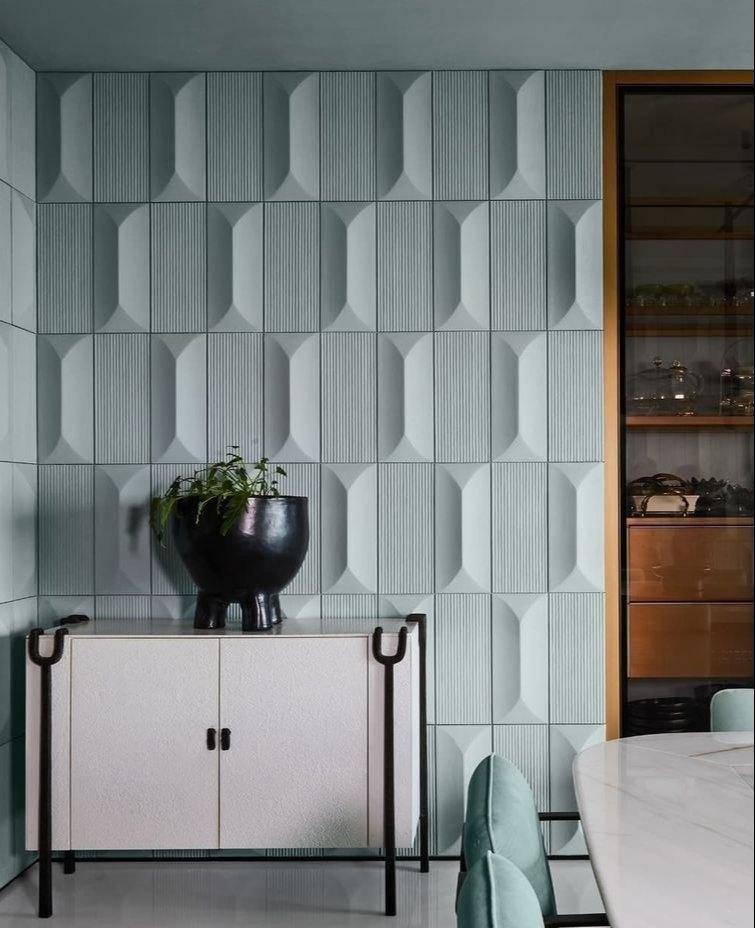
- Installation Method: MDF panels can be easily cut to size and installed on walls using nails, screws, or adhesive. Their smooth surface can be painted or veneered, allowing for a high degree of customization to match any interior design theme.
- Common Applications: Due to its cost-effectiveness and adaptability, MDF paneling is extensively used in creating decorative wall features, wainscoting, and in furniture design. Its consistent texture and density make it a preferred choice for both residential and commercial spaces looking for a durable and aesthetically pleasing wall covering solution.
Microperforated Paneling
Microperforated Paneling is designed to enhance acoustic quality by featuring small, barely visible holes that effectively trap noise and reduce reverberation. This innovative solution combines functionality with aesthetic versatility, utilizing materials such as MDF.
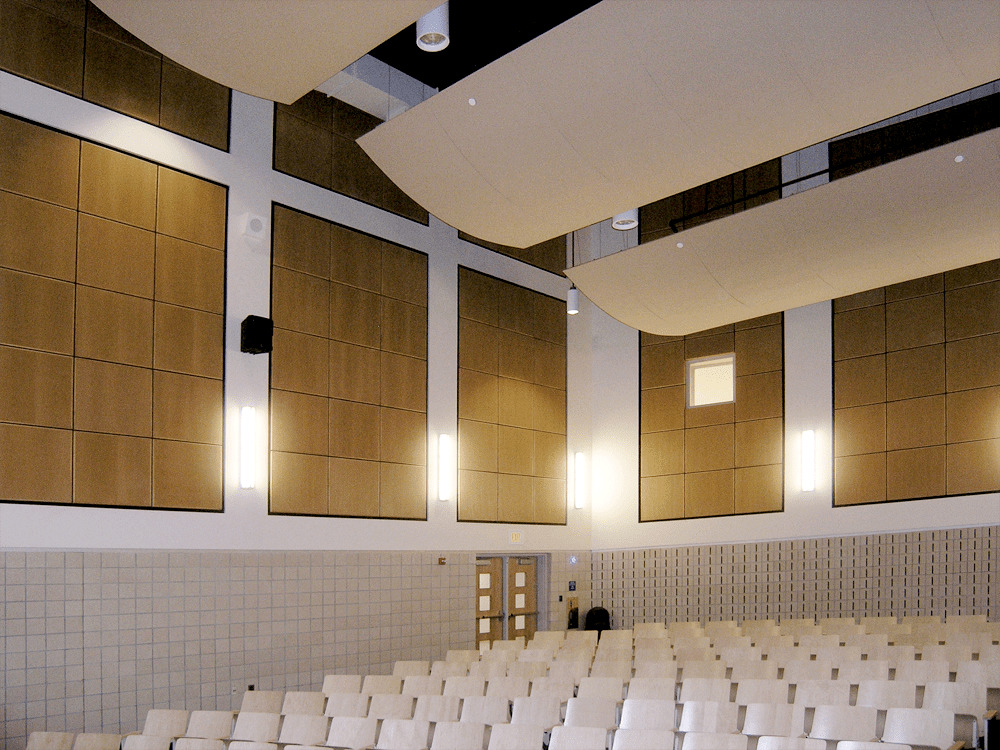
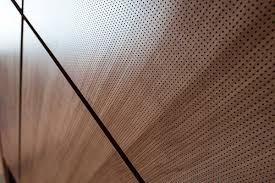
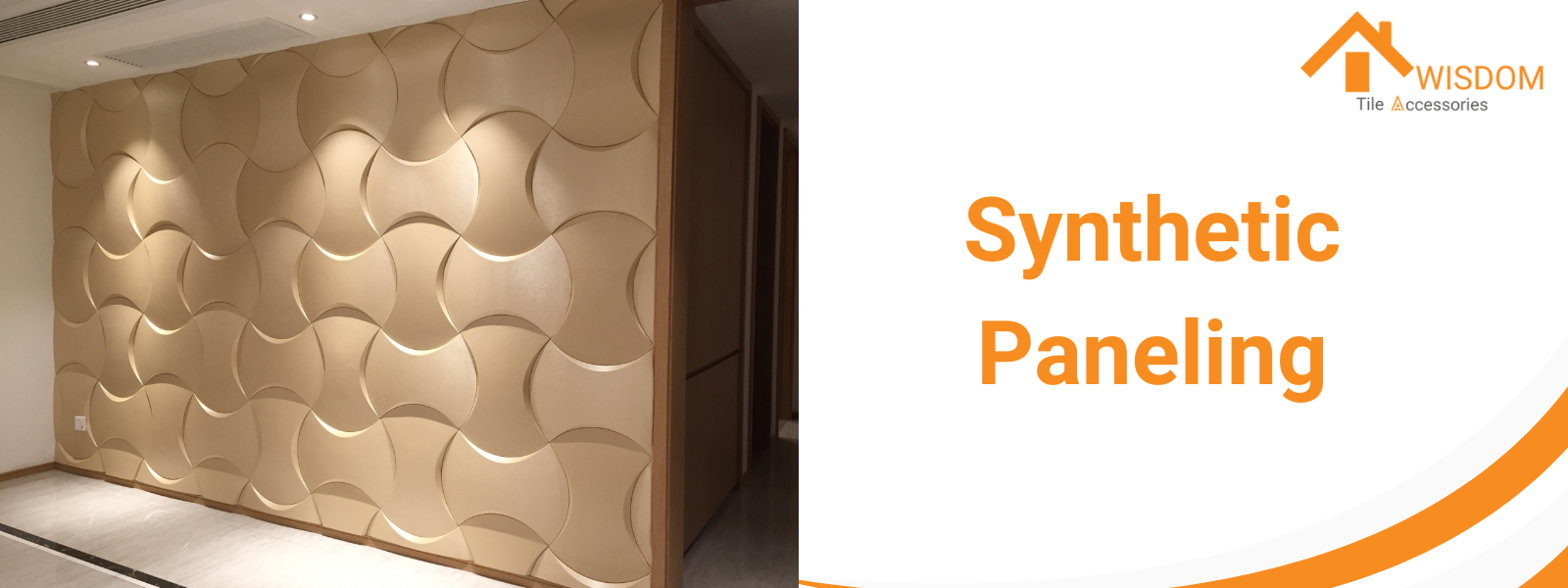
Synthetic Paneling
PVC/Vinyl Paneling
PVC/Vinyl Paneling emerges as a practical and cost-effective alternative to traditional materials like wood, especially in moisture-prone environments. Composed of hollow-core, plastic sheets bonded under high pressure, this paneling excels in durability and resistance to warping or rotting.
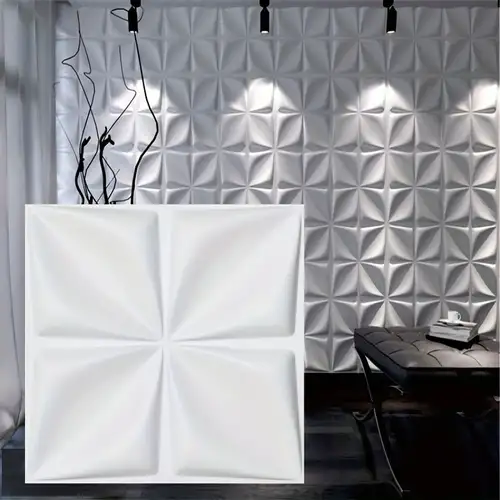

- Installation Method: These lightweight panels can be easily installed using adhesives, clips, or screws, making them a straightforward choice for both DIY enthusiasts and professionals. Their flexibility allows for creative installations in a variety of settings.
- Common Applications: PVC paneling is particularly suitable for bathrooms, kitchens, basements, and any area that experiences high humidity or direct water exposure. Beyond walls, it's also used for window profiles, flooring, and roofing, offering a waterproof solution that maintains its integrity over time.
3D/Sculpted Synthetic Paneling
3D/Sculpted Synthetic Paneling introduces an artistic and dynamic element to interiors, featuring three-dimensional designs that can transform any space into a visual masterpiece. Made from materials like MDF, thermoplastic, and ultra-textured MDF, these panels offer depth, texture, and an unparalleled aesthetic appeal.
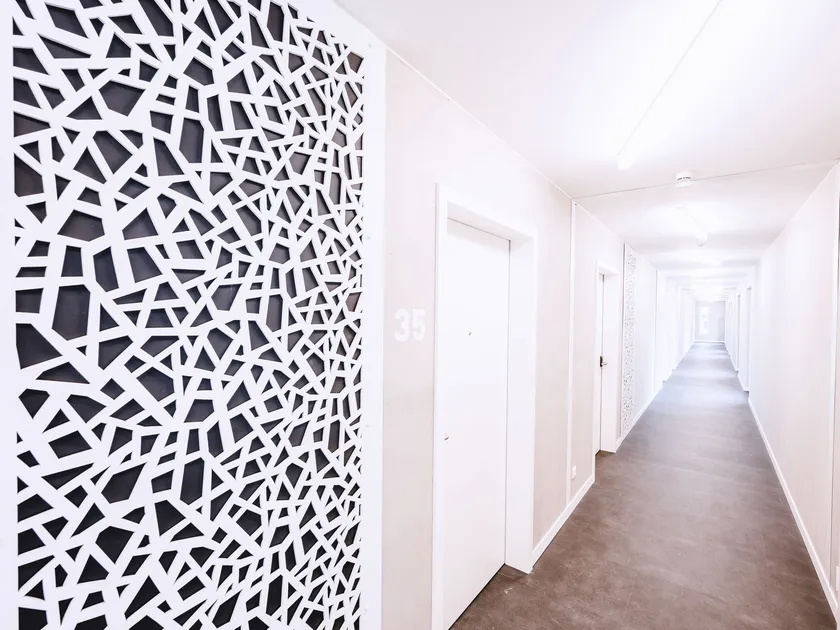
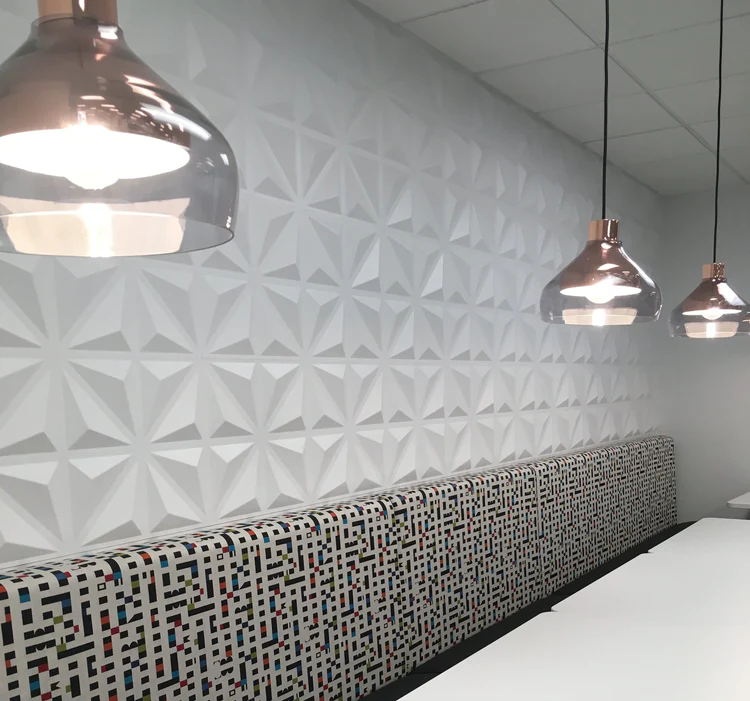
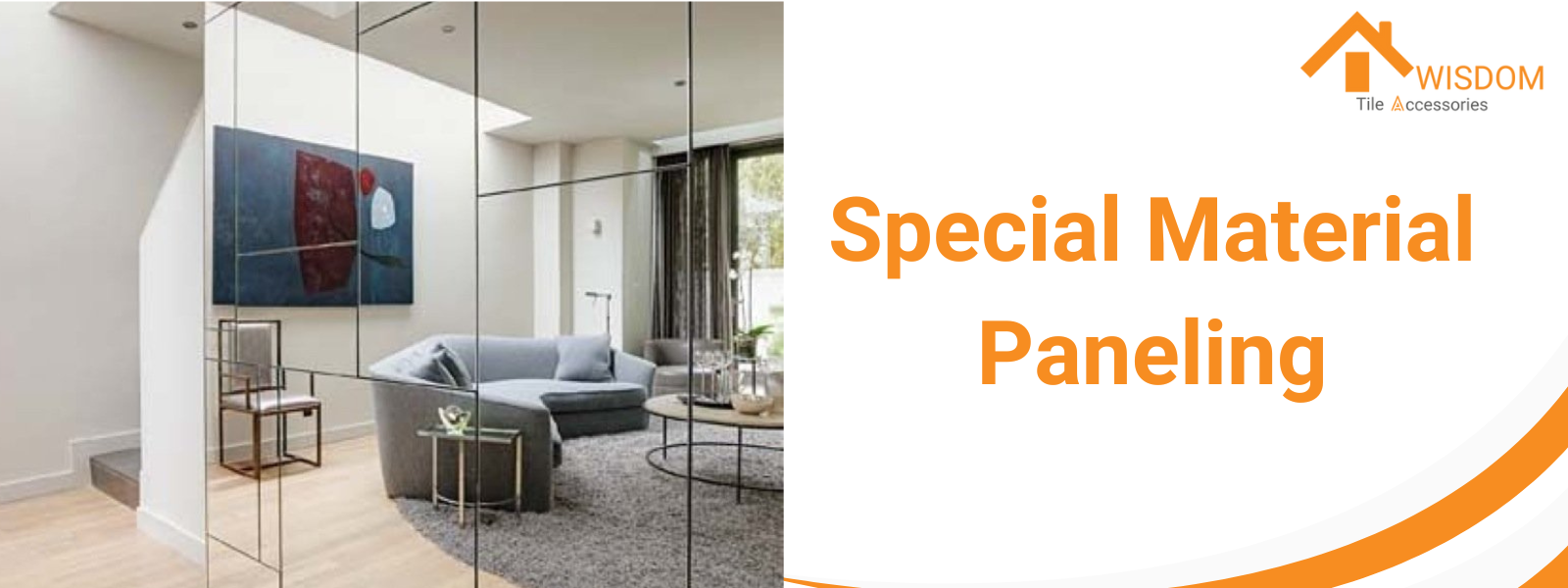
Special Material Paneling
Upholstered Fabric Paneling
Upholstered Fabric Paneling introduces a layer of texture, warmth, and comfort to interiors, serving as both a functional and decorative element. Ideal for creating soft backrests or as eye-catching wall decor, these panels offer versatility in design and application.
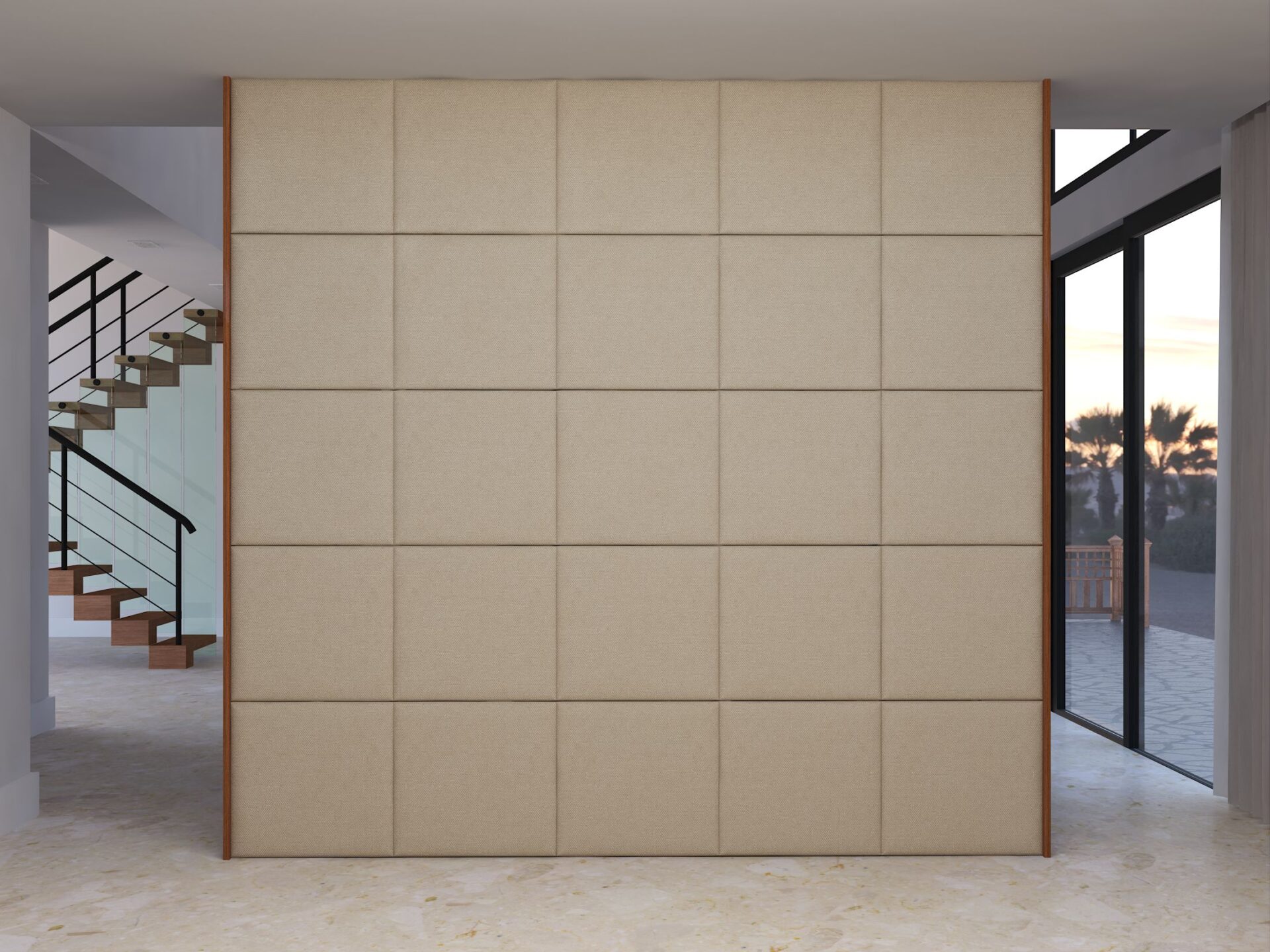

- Installation Method: These panels are designed for easy, DIY-friendly installation. They can be mounted on walls using a variety of methods, including direct adhesion, hook and loop fasteners, or mounting frames, allowing for quick and straightforward setup.
- Common Applications: Upholstered panels are a popular choice for bedrooms, living rooms, and entryways, providing a plush backdrop behind beds, sofas, or TV walls. They're also used to enhance the coziness of window recesses or seating areas, adding a touch of luxury and comfort to any space. The ease of assembly and the ability to choose from a wide range of fabrics make them a convenient and customizable option for adding depth and interest to interiors.
Glass and Mirrored Panels
Glass and Mirrored Panels elevate interiors with a touch of sophistication and the illusion of expanded space. These panels, crafted from high-quality glass, reflect light beautifully, adding brightness and a sense of depth to any room.
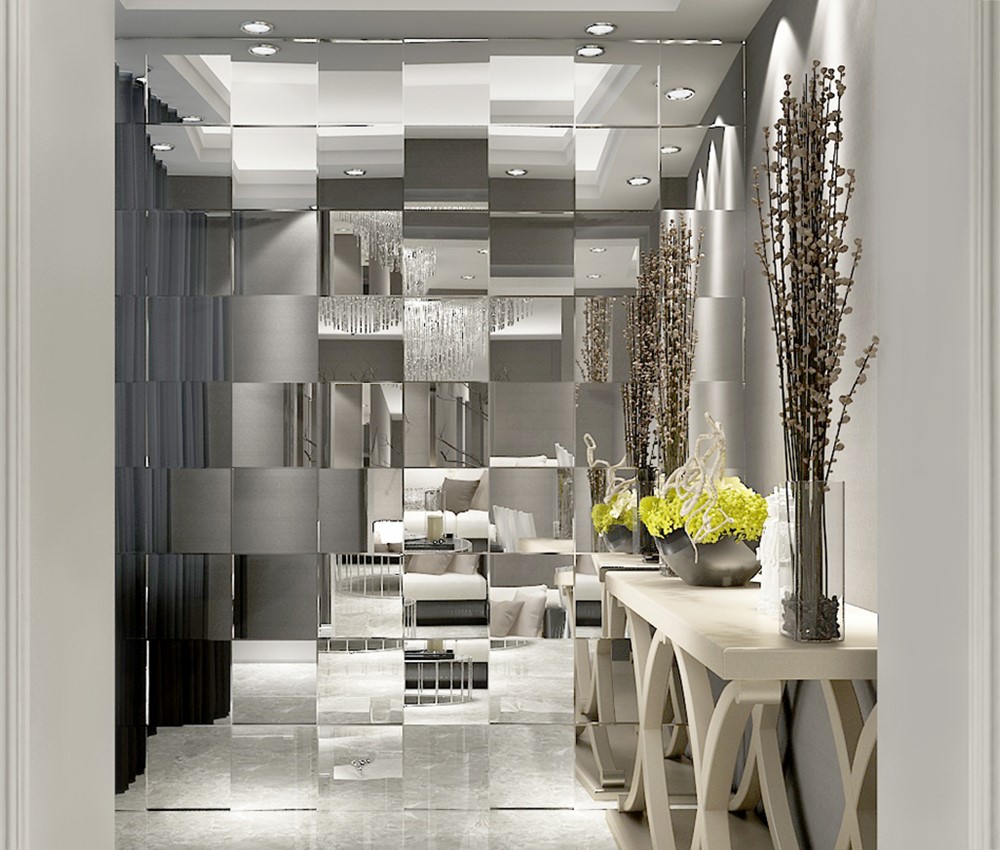
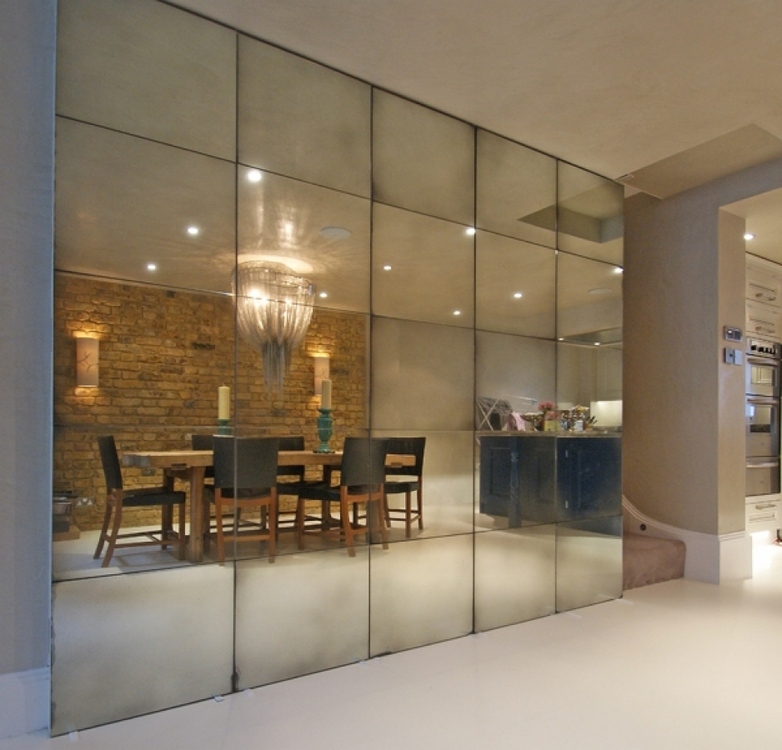
- Installation Method: Typically installed using specialized adhesive or mounting brackets, these panels require careful handling to ensure they are securely and safely affixed to walls. Professional installation is often recommended to achieve the best results and to avoid damage.
- Common Applications: Ideal for creating statement walls in living areas, bedrooms, or hallways, glass and mirrored panels are also perfect for enhancing small or dimly lit spaces. Their ability to amplify natural light and visually double the room size makes them a favored choice in both residential and commercial settings for an instant upgrade to luxury and openness.
Metal Paneling
Metal Paneling offers a modern and durable solution for walls, combining two coated metal sheets, often aluminum or steel, with an insulating foam core. This design not only enhances aesthetic appeal but also improves thermal efficiency.

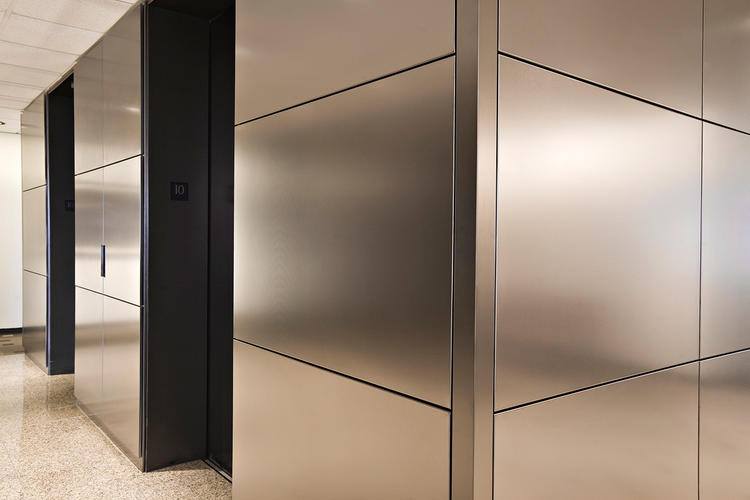
Your Trusted Wall Panel Edge Trim Supplier
Elevate your interior design projects with Awisdom Tile Accessories, the premier global manufacturer specializing in a comprehensive range of decorating and building materials. Among our standout offerings, the wall panel edge trim emerges as an essential finishing touch for any wall panelling endeavour, ensuring a sleek, seamless transition and enhancing the overall aesthetics of your space. With decades of expertise and dedication to innovation, we provide only the highest quality products designed to meet the diverse needs of our customers.
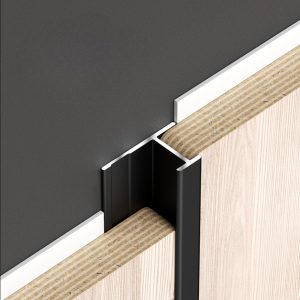
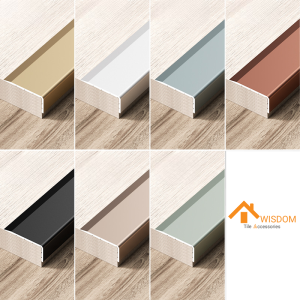
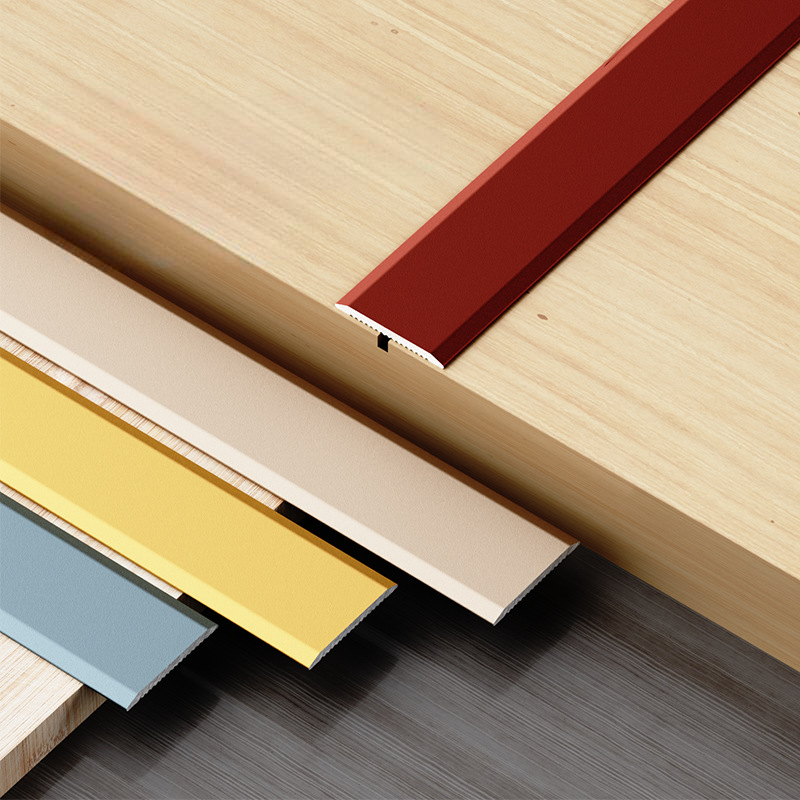

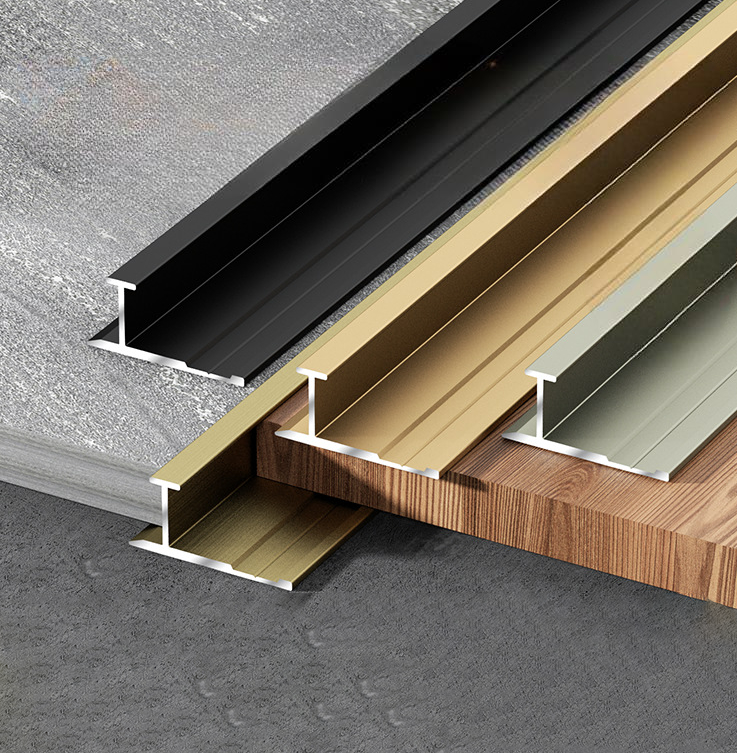
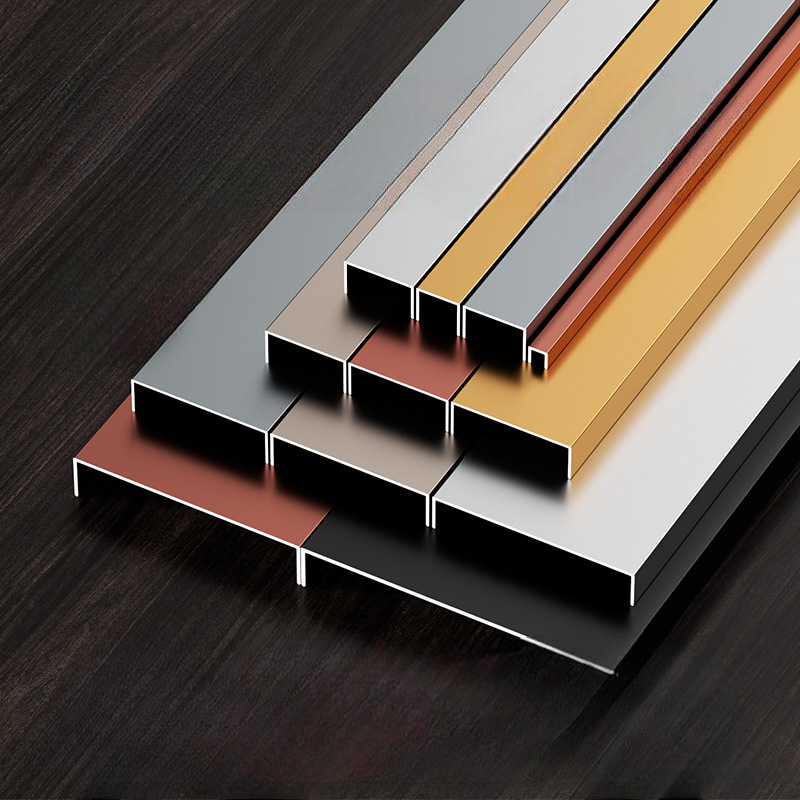
Our commitment to excellence is matched by our promise of competitive pricing, fast delivery, and unparalleled customer service, making us your go-to source for all tile accessory and decoration needs. Explore our versatile collection and discover how Awisdom Tile Accessories can transform your visions into reality, with solutions that embody both functionality and style. Initiate an inquiry today and take the first step towards elevating your design projects with our professional, high-standard solutions.
FAQ about Wall Panelling
Is paneling cheaper than tiling?
Absolutely, wall paneling offers a cost-effective alternative to tiling, primarily due to the size and ease of mass production of bathroom wall panels compared to smaller tiles. The larger size of panels means fewer units are required to cover the same area, simplifying the installation process and significantly reducing both material and labor costs. Additionally, the reduced complexity of panel installation over traditional tile setting offers a quicker, more affordable setup without compromising on style or finish.
Are PVC panels better than tiles?
PVC panels present a modern and efficient alternative to traditional tiles, boasting several advantages that cater to contemporary home improvement needs. Their ease of installation stands out, allowing for quick and simple room updates without the extensive labor and costs associated with tile installation. PVC panels also offer a diverse range of styles and finishes at a more accessible price point, making them an attractive option for both aesthetic and practical renovations.
How long do PVC wall panels last?
PVC wall panels are distinguished by their durability and longevity, typically lasting upwards of 10 to 15 years under normal conditions. Engineered for resistance against moisture, insects, and general wear, PVC panels maintain their appearance and integrity over time, making them a long-lasting solution for any interior space. Their robust construction ensures that they remain a steadfast component of your decor, resisting the common issues faced by alternative materials.
Why is wall panelling so popular?
Wall paneling enjoys popularity for its exceptional blend of practicality and aesthetic appeal. Its versatility in design allows it to fit various decor styles, from modern to traditional, while offering a durable surface resistant to daily wear and tear. Installation ease is another significant benefit, with many homeowners appreciating the quick and clean process compared to traditional wall treatments. Additionally, wall panels can provide added insulation, enhancing the energy efficiency of a space.
How to install bathroom wall panels over tiles
Installing bathroom wall panels over existing tiles requires a few preparatory steps to ensure a secure and lasting fit. Begin by thoroughly cleaning and drying the tiled surface to remove any debris or moisture. Next, sand the tiles lightly to create a rougher surface that enhances adhesive grip. Apply a suitable adhesive evenly across the tiles, then press the panels firmly in place, ensuring alignment and a tight seal to prevent moisture penetration. Allow adequate time for the adhesive to cure, following manufacturer recommendations for the best results.
How to measure for wall panelling
Measuring for wall paneling involves a straightforward process to ensure you purchase the correct amount of material:
- Measure Length: Start by measuring the horizontal length of each wall where the panels will be installed, recording measurements in feet.
- Measure Height: Next, measure the vertical height of the walls, from the floor to the ceiling, excluding any baseboards or crown molding.
- Account for Windows and Doors: Subtract the area of any windows or doors on the walls to avoid overestimating the amount of paneling needed.
- Calculate Panel Quantity: Using the total square footage, consult with your paneling provider to determine the number of panels required, considering the specific dimensions and coverage of the product you've selected.


